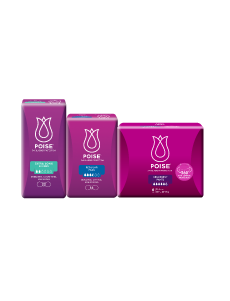What is Female Incontinence?
For many women, female incontinence means losing just a few drops of urine when they laugh, sneeze, cough, jog, make love, or even hear running water, when washing the dishes or walking past a fountain.
Female incontinence is widespread and affects women of all ages, including young adults and sometimes even children. Incontinence can be caused by everyday habits, underlying medical conditions, and minor and serious physical problems that can affect both young and old, healthy and ailing.
Some women learn to quickly bring mild incontinence under control by sitting down or crossing their legs tightly. While for others, female incontinence may be a sudden urge to go to the toilet, followed by significant amount of liquid loss.
If you’re finding you’re experiencing an episode of leakage, take heart that you are not alone. You’ll probably discover that some of your friends are going through the same thing, as many women experience light bladder leakage.
Types of Female Incontinence?
Knowing what type of incontinence you have, is the first important step to finding the right treatment. Once diagnosed, your General Practitioner (GP) can then advise you what treatment options are available for your specific type of incontinence. While there are several types, the three most common types of female incontinence are stress, urge and overflow incontinence.
Stress incontinence is physical stress or pressure on your internal organs such as a cough, a sneeze or even a laugh when your bladder is full. Read more about stress incontinence.
Urge incontinence is the inability to hold on for more than a few minutes once you have a sudden overwhelming need to urinate. Read more about urge incontinence on DEPEND® website.
Overflow incontinence is characterised by leaking with no warning or urge to urinate. Read more about overflow incontinence on DEPEND® website.








